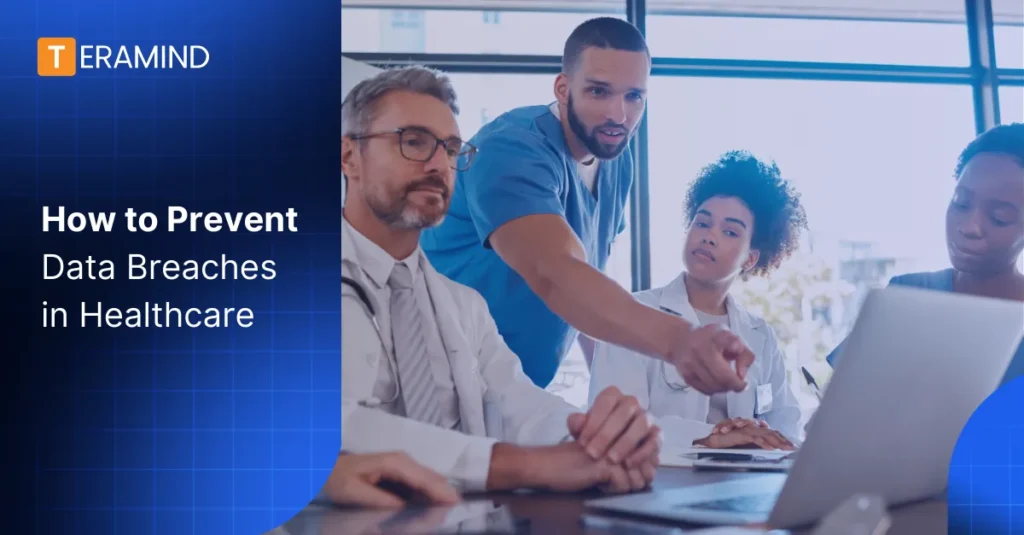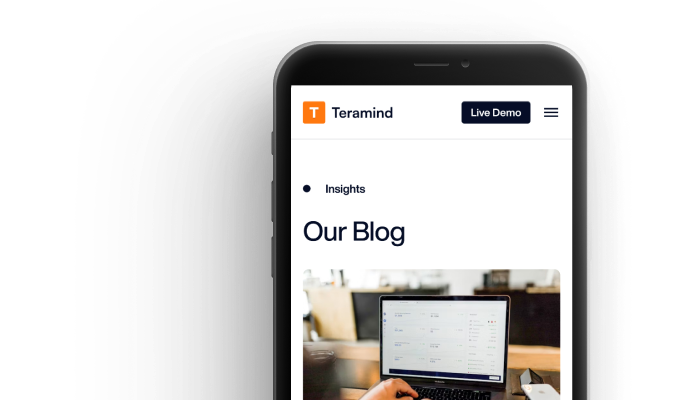Imagine the worst-case scenario: a healthcare security leader receives a call in the dead of night, informing them that their network has been breached and all systems are down. Even a minor data breach in the healthcare sector can jeopardize patients’ personal health information (PHI), leading to identity theft, medical fraud, financial loss, or even the disruption of critical, life-saving medical services.
Moreover, healthcare data breaches can disrupt operations, cause significant reputational damage, and result in hefty regulatory fines. Think back to the most recent ransomware attack on UnitedHealth; hundreds of physicians were forced to shut down operations and could not process health claims, while many patients lost access to their physicians.
The escalating use of connected medical devices, widespread adoption of electronic health records (EHRs), and the increasing sophistication of cyberattacks have created a fertile ground for threat actors to target healthcare organizations. Given the potential implications of a data breach, it is imperative that data security is a top priority for every healthcare institution.
13 Ways to Prevent Data Breaches in Healthcare
To effectively safeguard sensitive data, healthcare organizations must adopt a multi-layered defense strategy for their cybersecurity program. Here are 13 strategies to enhance data security and prevent data breaches:
1. Implement Zero Trust Architecture
An effective strategy to reduce the risk of unauthorized access to your network is to use Zero Trust Architecture (ZTA), a security framework that relies on the principle of “never trust, always verify.” This principle states that every user, device, and application that accesses the network must be authenticated and verified.
As part of ZTA, you should also enforce the principle of least privilege, which means users only have permission to access data they need to perform their roles. This also prevents cybercriminals from using stolen credentials to gain admin privileges. Lastly, continuously monitor and validate that the zero trust strategies you’ve put in place work as your organization grows to prevent unauthorized access and mitigate potential threats.
2. Encrypt Data at Rest and in Transit
Encrypting data at rest and in transit is a fundamental way to secure data and internal and external communications and protect data from unauthorized access. For healthcare providers and covered entities, encryption is a technical safeguard in the HIPAA Security Rule to safeguard patients’ electronic protected health information (ePHI).
Of course, you should encrypt all data, including what’s stored on-premises, in the cloud, and on mobile devices.
Although the Security Rule doesn’t require specific encryption algorithms, we recommend using Advanced Encryption Standard (AES) or Rivest-Shamir-Adleman (RSA) to keep the data confidential. In addition, encryption key management practices should be implemented so that the decryption keys are only accessible by authorized users and handled in a way that maintains the integrity of the encrypted data.
3. Implement Data Loss Prevention Software
Healthcare is a collaborative industry, and staff from one clinic may likely work closely with healthcare providers at another clinic, sharing patient data or treatment plans. Unfortunately, this makes it easy for threat actors to target your staff.
By implementing Data Loss Prevention (DLP) software, you can monitor the activity of your employees and block suspicious activity in real time to prevent sensitive data from being shared externally. You can also take this further by using User and Entity Behavior Analytics (UEBA) tools to identify unusual behavior patterns that may indicate a cyber threat.
4. Provide Targeted Security Training for Healthcare Staff
In healthcare organizations, medical staff prioritize providing patient care over cybersecurity awareness. However, since users are the weakest link in cybersecurity, we recommend implementing role-based security awareness training programs to help your staff recognize phishing scams. Empowering your staff with the knowledge and skills to identify and respond to cyber threats can significantly enhance your organization’s data security.
Use real-world phishing and business email compromise (BEC) scenarios and hands-on simulations and exercises, so your staff knows how to respond to these threats. Also, ensure you’re regularly communicating with your staff and informing them about the latest attacker tactics, techniques, and procedures (TTPs) and emerging threats.
5. Implement Rigorous Patch Management Processes
Threat actors commonly gain access to your environment by exploiting unpatched vulnerabilities. Implement a comprehensive patch management program to defend against these threats and prevent the exploitation of known vulnerabilities. This can significantly reduce the risk of data breaches, instilling confidence in your organization’s data security.
As part of a comprehensive patch management program, we recommend prioritizing critical and high-risk vulnerabilities first to immediately address the most significant threats. We recommend automating patch deployment, especially if you have limited in-house IT and cybersecurity staff. Lastly, regularly test and verify the patches’ effectiveness to ensure they resolve the intended vulnerabilities without introducing new issues.
6. Conduct Comprehensive Risk Assessments
As an integral part of an overall cyber risk management strategy, risk assessments help identify current or potential areas of risk within the organization (e.g., users, applications, etc.) so you can minimize their impact on the business. By understanding the specific risks impacting your healthcare organization, you can allocate resources effectively to protect the critical assets and data first.
We recommend conducting regular cyber risk assessments—at minimum annually—to identify potential areas of risk as your organization grows continuously. As part of the assessment, you’ll also be able to assess any vulnerabilities or threats and develop risk mitigation strategies to safeguard sensitive data and stay ahead of potential threats.
7. Deploy Advanced Threat Detection and Response Tools
Given the state of cybercrime today, security leaders should make one investment: 24/7 threat detection and response. This enables organizations to detect threats and respond to them in real-time. One such solution is endpoint detection and response (EDR), which protects organizations against threats like commodity malware, ransomware, file-less attacks, lateral movement, and more. EDR tools also provide real-time visibility across all endpoints and user behavior so you can eliminate threats before they disrupt your operations.
In addition, we recommend integrating threat intelligence feeds, which help you continuously monitor for indicators of compromise (IOCs) and threat actor TTPs. This enables stronger threat detection and response capabilities and allows your team to stay ahead of known and unknown emerging threats.
8. Implement Secure Mobile Device Management (MDM)
Since the use of mobile devices in healthcare is increasing and will continue to do so, Mobile Device Management (MDM) policies are a critical component of any healthcare cybersecurity strategy. MDM solutions enforce strong authentication and access controls to protect sensitive data on mobile devices, ensuring that only authorized users can access it.
Plus, MDM solutions not only help monitor and control which applications are installed on the device and how they’re used, but they also give you the ability to remotely wipe, or lockout, the device in case a potential threat is detected.
9. Establish a Security Operations Center (SOC)
Establishing a security operations center (SOC) is essential to effectively implementing 24/7 threat detection and response solutions and maintaining complete visibility across your attack surface. This will allow you to centralize security monitoring and incident response capabilities and enable a coordinated approach to threat management.
We also recommend implementing security orchestration, automation, and response (SOAR) tools so Security Analysts can automate repetitive, manual tasks and focus on the threats that truly matter. Lastly, ensure you have security experts within the SOC who can conduct proactive hypothesis-driven threat hunts to help identify known and unknown threats, conduct deep threat investigations, and enable stronger response actions.
10. Implement Third-Party Risk Management
Healthcare organizations never operate in a vacuum; whether invoicing, patient data management, or medical equipment, they rely on various third-party vendors for day-to-day operations. This means third-party risk management is essential. Conduct thorough vendor risk assessments to strategically assess every vendor with privileged access to your systems, networks, and data.
In addition, before signing any vendor contracts, establish (and enforce) security requirements that outline how a vendor-related breach will be handled, who will be held responsible for potential breaches, and how vendors will adhere to your organization’s security standards.
11. Develop and Test Comprehensive Incident Response Plans
A well-defined incident response plan is a core component of mitigating potential data breaches. As part of the plan, make sure you assemble a team of experts with specific roles and responsibilities mapped out so everyone knows what their job is. The IR plan should also establish communication and escalation protocols so the information shared internally with your stakeholders is accurate and timely.
Of course, testing that your incident response plan works before an incident occurs is just as important. So, regularly conduct tabletop exercises and simulations to prepare for real-world scenarios. After all, when a breach occurs, your team should be a well-oiled machine that can immediately start the remediation process.
12. Implement Data Lifecycle Management
For healthcare organizations, data lifecycle management is crucial to protecting patient data, adhering to compliance regulations such as HIPAA, and even accelerating incident response plans. By adopting data lifecycle management into your strategy, you can classify and label data based on sensitivity and criticality so the most sensitive information receives the most protection.
Data lifecycle management will also help define and implement policies that outline how sensitive data should be retained or disposed of to reduce the risk of unauthorized access and maintain data integrity.
13. Conduct Regular Security Audits and Penetration Testing
Since many healthcare organizations rely on legacy software or shadow IT, it’s important to conduct regular security audits and penetration tests to identify potential vulnerabilities and weaknesses. By performing internal and external audits, you can get a comprehensive view of your security posture and ensure your healthcare organization’s security.
On the other hand, penetration tests simulate real-world attacks so you can test your defenses, discover potential entry points, and better understand how threat actors will gain access to your networks. In doing so, you can better identify where your existing gaps lie and address them proactively.
Incident Response and Breach Notification
When it comes to cyberattacks, it’s not a matter of if but when. Therefore, in addition to prevention strategies, a strong incident response and breach notification plan is essential to mitigate the impact of a data breach.
Activating the Incident Response Plan
When a data breach occurs, every second counts. So, as soon as a breach occurs, it’s time to activate the incident response plan. This includes assembling the incident response team and any other stakeholders required (e.g., digital forensics team, legal team, etc.).
While the IR team should focus on containing and mitigating the incident to minimize damage and prevent further data loss, you should have a digital forensics expert preserve evidence that will hold up in a court of law.
Notifying Affected Individuals and Regulatory Bodies
Next, as HIPAA mandates, you must notify all affected individuals, regulatory agencies, and the Secretary about the breach due to the Breach Notification Rule. In some instances, even the media needs to be notified.
Before you conduct any breach notifications, make sure you’ve determined the scope and nature of the data breach so the information you provide is accurate. Lastly, you should also offer any resources needed to the impacted individuals, such as credit monitoring, identity theft protection, or even counseling.
Post-incident Review and Improvement
The last step of your incident response plan is to conduct a thorough post-mortem analysis of the incident, answering questions such as what happened, which entry points the threat actors used to gain initial access, and more.
The goal is to identify areas of improvement and apply the lessons learned to your greater cybersecurity strategy. You should also take this time to update your incident response plan (if necessary) and add any security measures you didn’t have before the incident to prevent future threats.
Conclusion
Data breaches can have detrimental consequences for healthcare organizations. By implementing most, if not all, of the strategies outlined above, you can significantly reduce the risk and impact of a potential breach.
Moreover, adopting a proactive approach to cybersecurity will foster a culture of security awareness within your healthcare organization.
Investing in these comprehensive security measures mitigates immediate risks and builds a resilient foundation capable of withstanding future cyber threats. After all, when data security becomes integral to everyday operations, you can safeguard patient trust and ensure the seamless delivery of healthcare services.







